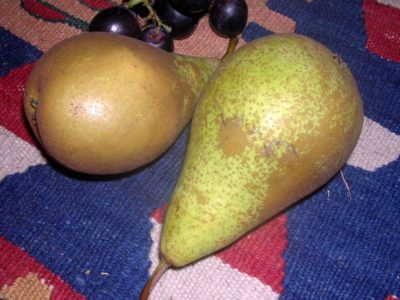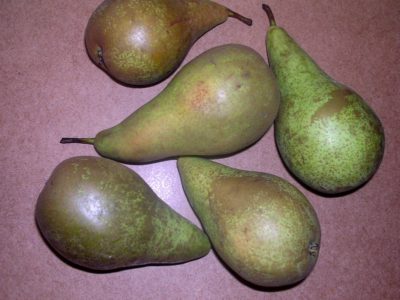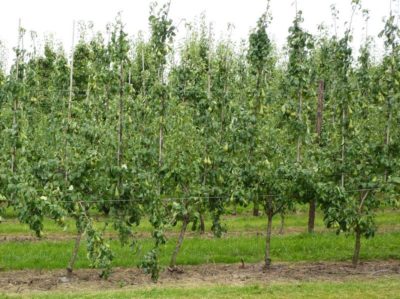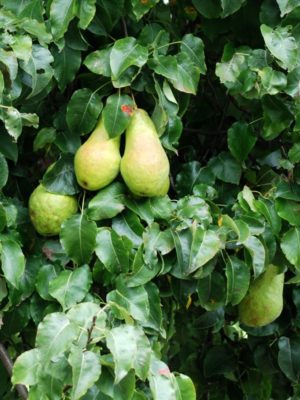
Pears
Pears are close relatives of apples. While most pears have a pear-shape, there are also varieties that resemble apples, so it not always easy to distinguish the fruits. A major difference between apples and pears is that the latter have beneath the peal or in the tissue of the fruit clusters of lignified cells (cells with hardened walls) which is knows as the “grit”. This is the small rough granules or particles that you taste when eating them.
Several Pyrus species are all pears. The most common species are the European pear, the Chinese white pear and the Asian pear. This page is about the European pear, Pyrus communis.
Names
Scientific
Pyrus communis
English
European pear
Pear
Dutch
Gewone peer
Peer
Spanish
Pera
Peral común
French
Poire
Poirier
Poirier commun
German
Birne
Kultur-Birne
Italian
Pera
Pero
Taxonomy
Order
Rosales
Family
Rosaceae
Genus
Pyrus
Species
Pyrus communis (Pear)
Basic information and facts
Origin:
The European pear originates from central and eastern Europe and southwest Asia.
Distribution:
Many different varieties are widely grown in Europe, North America and Australia.
Evergreen or deciduous:
The European pair is a deciduous tree (but some evergreen pear species exist in Asia)
Flowers:
White flowers, sometimes yellowish or pinkish. Flowers have 5 petals and are 2 to 4 centimeters in diameter.
Fruits:
Fruits can be round like an apple, but usually fruits are pyriform (=pear-shaped), having an elongated part near the base and a more swollen end. Wild pears have small fruits, often less than 4 cm in diameter, but cultivated species can be up to 18 centimeter long with a diameter up to 8 centimeters.
Climate and weather:
Temperate climate
Height:
Trees usually will grow 10 to 15 meter in height.
Crown size:
The trees have a tall narrow crown.
Spacing (close range)
4.5 meter
Spacing (wide range)
9 meter
Propagation:
Seedlings are grown from seeds and later grafted with the desired variety.
Harvesting:
Fruits should preferably be harvested green, when they are not yet fully ripe. Fruits that get ripe on the tree are more gritty inside.
Uses:
Eat fresh as hand fruit. Combine in fruits salads. Can be used to make compote (stewed pears).
Proverbs and Quotes
- A pear tree cannot bear an apple.
- A pear will fall to its root.
- A pear will never fall into a closed mouth.
- A ripe pear is more likely to fall in the shit than onto the clean ground.
- Don’t shake the tree when the pears fall off themselves.
- Prickly pear trees don’t produce peaches.
- The wild pear has blossomed: the kid goat no longer suffers.
- There are only ten minutes in the life of a pear when it is perfect to eat.
- You can’t compare apples with pears.
- When the pear is ripe, it falls.
- If you want to know the taste of a pear, you must change the pear by eating it yourself. If you want to know the theory and methods of revolution, you must take part in revolution. All genuine knowledge originates in direct experience. (Mao Tse-Tung)
Crop categories
Cool temperate crops
Fruits
Major crops
Mediterranean crops
Subtropical crops
Temperate crops
Pictures

Pears

Pear orchard

Pear
